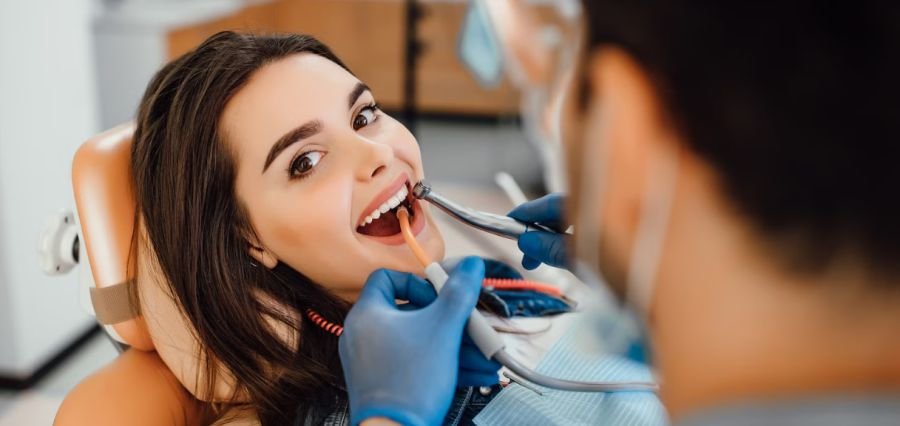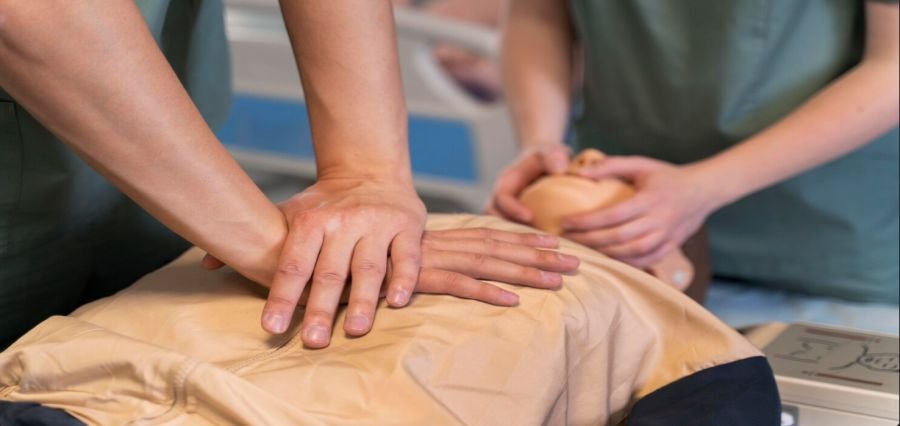When it comes to straightening teeth, traditional braces and Invisalign are two common choices. Deciding which one is best depends on your needs and what works for your lifestyle. Both options have their own advantages, so it’s important to understand how they work and what to expect from each.
Read this article to know which one is for you.
What are Traditional Braces?
Traditional braces use metal brackets and wires to gradually move teeth into place. They are effective for fixing many issues like crooked teeth, gaps, and bite problems.
A key benefit is that braces work constantly without needing to be removed. They’re especially good for treating more complex dental problems. However, braces are visible, which may make some people feel self-conscious, and they can make brushing and flossing more difficult, requiring extra care to prevent plaque and gum issues.
How Does Invisalign Work?
On the other hand, Invisalign is a modern approach to teeth straightening that uses clear, removable Invisalign aligners instead of metal brackets. These aligners are custom-made for each person and fit snugly over the teeth, moving them into place over time. Every few weeks, you switch to a new set of aligners to keep the process going.
The biggest benefit of Invisalign is that the aligners are clear, making them much less noticeable than traditional braces. For adults and teens who want a more subtle option, this is a major plus. Another benefit is that you can remove the aligners, which means you can eat whatever you like without worrying about damaging them. It also makes brushing and flossing easier.
Before starting Invisalign, it’s important to consult an Invisalign orthodontist. Not everyone is a good fit for Invisalign treatment, and a specialist can assess your teeth to see if Invisalign will work for you. They’ll consider factors like the complexity of your dental issues and your ability to wear the aligners as needed. This step ensures you’re choosing the right solution for your teeth, as more severe cases may require traditional metal braces.
How Long is Treatment?
The amount of time it takes to straighten your teeth depends on the method and how complex the issue is. Traditional braces are typically worn for 18 months to 3 years, while Invisalign usually takes 12 to 18 months.
For people with more serious dental problems, traditional braces treatment may be the quicker option since they work continuously. But for simpler cases, Invisalign can be just as fast if the aligners are worn as recommended.
Comfort Levels
Comfort is something most people think about when choosing a treatment. Traditional braces can cause soreness, especially after adjustments, as the teeth move. The metal brackets and wires may also rub against the inside of your mouth, causing irritation. Orthodontists usually provide wax to help with these issues, but it can still be uncomfortable.
Invisalign, on the other hand, is made from smooth plastic and generally feels more comfortable. Since there are no metal parts, there’s less risk of irritation. However, some discomfort is still normal as the aligners shift your teeth, but it’s often milder compared to traditional braces.
Cost
Cost is another big factor to consider when choosing between braces and Invisalign. Traditional braces usually cost between USD$3,000 and USD$7,000, depending on the complexity of the case. Invisalign tends to be a bit more expensive, ranging from USD$3,000 to USD$8,000.
It’s a good idea to check with your insurance provider to see if orthodontic treatment is covered. In many cases, insurance will help pay for part of the treatment, whether it’s braces or Invisalign. You can also talk to your orthodontist about payment plans to help manage the cost.
Taking Care of Your Teeth
Keeping your teeth clean is important no matter which treatment you choose. With traditional braces, brushing and flossing can be a bit tricky because the brackets and wires can get in the way. Special tools like floss threaders or water flossers may be needed to get the job done properly.
Invisalign makes things easier since the aligners are removable. You can take them out and brush and floss your teeth like normal, which is a big advantage for people who want to keep up with their oral hygiene. But you’ll need to clean the aligners regularly, too, which can be done by rinsing them and brushing gently or using a special cleaning solution.
After either treatment, most people will need to wear a retainer to keep their teeth in their new position. Teeth can slowly move back over time, so retainers are important for keeping your smile straight.
Which One is Right for You?
Choosing between traditional braces and Invisalign depends on your personal needs and lifestyle. If you have a more complicated dental problem, traditional braces might be the better option because they are reliable and can handle more severe issues. They don’t rely on you to remember to wear them, so they work around the clock.
However, if you’re more focused on appearance and convenience, Invisalign could be a better fit. The clear aligners are nearly invisible and can be removed, making it easier to eat and clean your teeth. But remember, you have to be committed to wearing them for the majority of the day for the treatment to work.
Conclusion
Both traditional braces and Invisalign are great ways to straighten your teeth, but the right choice will depend on your unique situation. Traditional braces might be better for more serious dental issues, while Invisalign offers a more flexible and discreet option for those with milder cases. Talk to your orthodontist to find out which option will give you the best results and fit your lifestyle.
About the author:
Mark Stenz is a dental health writer with a passion for simplifying orthodontic information. Specializing in patient education, he aims to help readers make informed decisions about their dental care. When not writing, he stays up-to-date with the latest trends in orthodontics to offer clear and helpful insights.










